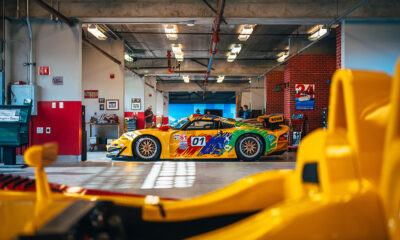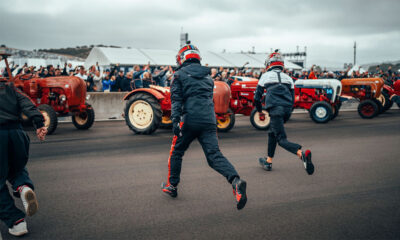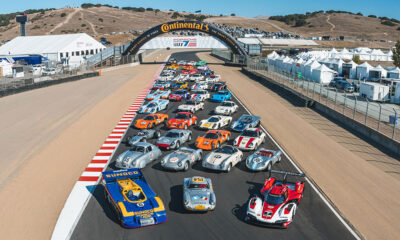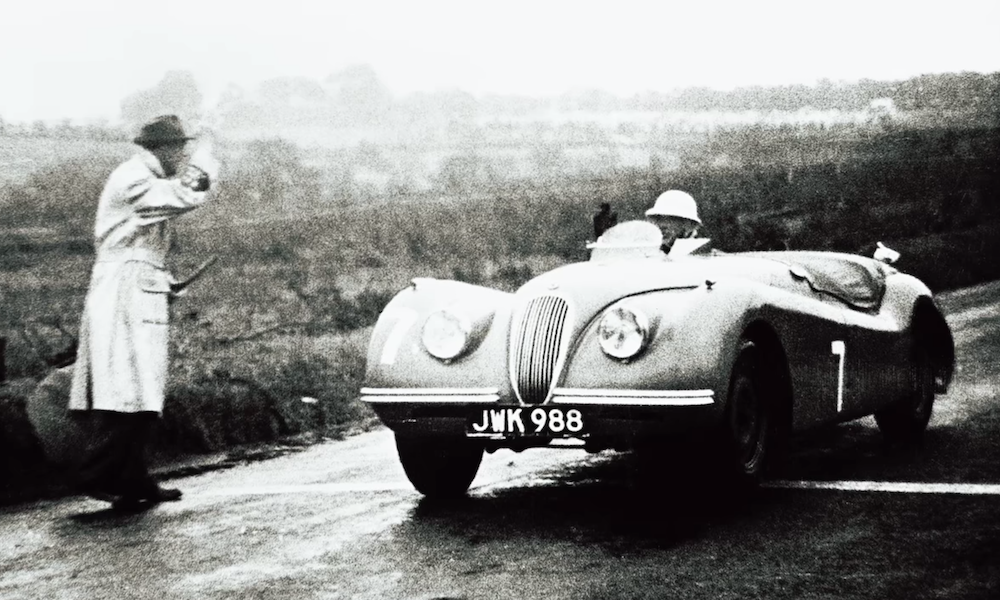
Photo: Jaguar
Sir Stirling Moss, who passed away on Sunday at the age of 90, is widely regarded as one of Britain’s most eminent and diverse motor racing talents.
Beyond his famous spell in Formula One and his exploits in saloon cars, Moss was also one of the top sports car pilots of his day.
In this feature, Sportscar365 picks out five of the best sports car drives from the Englishman’s illustrious racing career.
1950 RAC Tourist Trophy – Dundrod
The damp, groggy day that marked the return of the TT after a 12-year hiatus also marked the introduction to sports car racing of a young Stirling Moss.
On the eve of his 21st birthday, Moss had been entrusted to drive a Jaguar XK120 by the car’s owner Tommy Wisdom, a newspaper correspondent and occasional racer.
The 3,442 cc. Jag was a considerable step from the less powerful Cooper and HWM open-wheelers that Moss had previously driven, but his swift transition to the sports car demonstrated an impressive versatility that would come to define his career.
Moss dominated the race in the wet, finishing clear ahead of Peter Whitehead’s second-placed Jaguar having successfully tamed the tricky 7.4-mile Dundrod open road course.
Prior to the event, Moss’ friends had tried to persuade Jaguar to get him into one of the manufacturer’s works cars, only for his inexperience to blockade the potential deal.
However, his winning performance and the resulting public attention caused Jaguar to reconsider and led to Moss signing his first professional contract for the 1951 season.
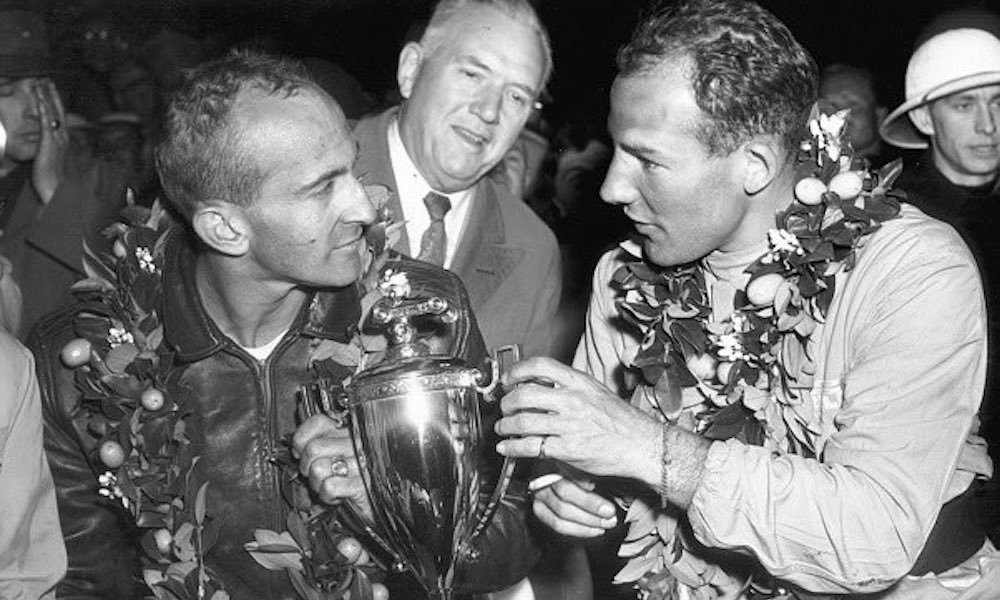
Photo: IMSA
1954 12 Hours of Sebring
Italian marques dominated the 1954 World Sportscar Championship as Lancia’s powerful D24s went up against Ferrari’s 375s and 750s for the manufacturers’ crown.
However, these two racing powerhouses were overwhelmed at the Sebring season-opener by the smaller OSCA brand, which wasn’t even competing in the same category.
Entered into the 1.5-liter class, Moss and Bill Lloyd were unfancied for the overall win as Lancia put up a determined four-car entry that included the likes of Fangio, Ascari, Villoresi and Taruffi.
Ferrari didn’t have a works presence, but it still posed a threat with three private entries which included one for Briggs Cunningham, who also provided the Moss/Lloyd OSCA.
Practice times showed the Lancias and Ferraris to be around 10 seconds quicker than the others, while this form continued into the race as the 5-liter class cars sped off.
However, Sebring’s notorious attrition rate annulled the leaders’ pace advantage and played perfectly into the hands of Moss and Lloyd who kept their OSCA out of trouble.
None of the Ferraris made the finish, while all but one of the Lancias were halted by mechanical issues.
Moss and Lloyd’s victory, by a margin of five laps, was the first and only world championship win for OSCA and also represented the first for Moss in a non-British car.
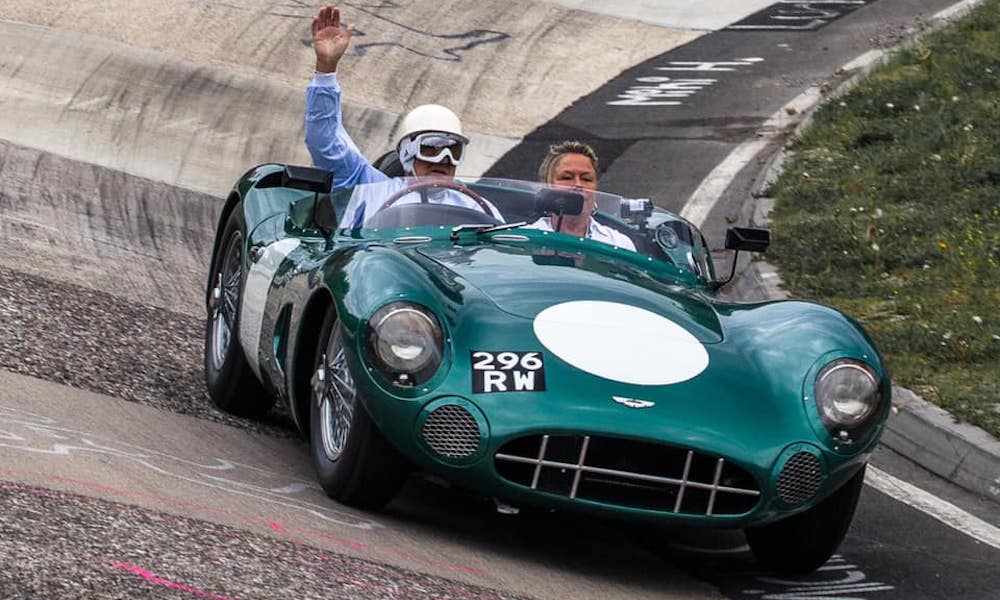
Photo: Aston Martin
1959 Nürburgring 1000km
Aston Martin’s chief goal for 1959 was to win Le Mans and the marque had no real interest in entering the 1000km Nürburgring race that came just two weeks before.
However, Moss still wanted to take on the Nordschleife and did so out of his own pocket while the rest of the David Brown team stayed at home to prepare for the 24 Hours.
Both Aston Martin and Moss had pedigree at the Nürburgring: the DBR1 sports car had won the previous two 1000kms while Moss had been victorious in 1956 with Maserati as well in 1958.
The ’58 triumph with Aston was, in itself, a landmark drive in which Moss drove most of the race save for the minimum share completed by his co-driver Jack Brabham.
Using the same mechanical setup as the year before, Moss was quick in practice for the 1959 edition but faced a sterner challenge from Ferrari’s greatly improved 250TRs.
In the race, Moss sped off into the lead to initiate what would turn into an epic cat-and-mouse contest. He broke his own lap record 16 times before switching out for Jack Fairman, who was given a six-minute advantage over the second-placed Ferrari.
Fairman then spun off in the wet at Brünnchen, enabling the Ferraris back through, but Moss took up the chase and was back in front by the end of his second stint.
Fairman’s next brief spell in the car passed without incident but the Englishman was overwhelmed by the speed of Ferrari aces Phil Hill and Jean Behra.
Moss returned to the cockpit on lap 36 of 44 and proceeded to slash away at the deficit, overtaking Hill for the lead at Flugplatz and going on to win by 41 seconds.
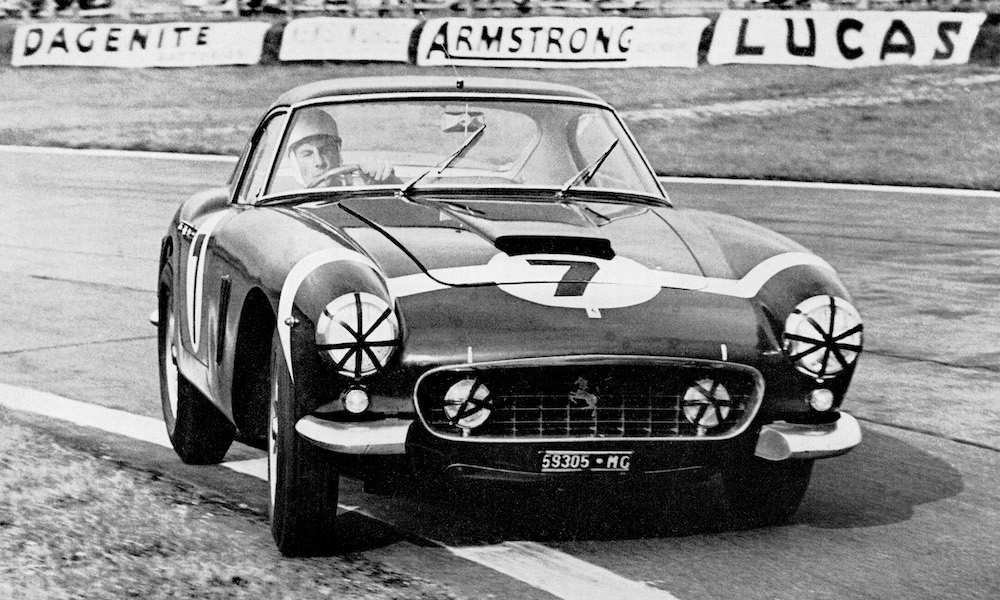
Photo: Ferrari
1960 RAC Tourist Trophy – Goodwood
Between 1958 and 1964, the TT was held at Goodwood on England’s South Downs.
Of the seven editions held there, Moss won four times to confirm himself as the most successful driver in the event’s history.
After winning the ’59 TT to clinch the World Sportscar Championship for Aston Martin, Moss ran the 1960 race in a Ferrari 250 GT entered by his F1 team Rob Walker Racing.
While the previous year had been a battle back from adversity (Moss was transferred to another Aston DBR1 mid-race after his original ride was destroyed in a pit fire) this time around it was a display of sheer individual mastery.
Unlike previous years, in 1960 the TT was not a round of the world championship. It also had a new single-driver format and a reduced – but still demanding – three-hour length.
Exhibiting individual quality, Moss staved off the challenges from Roy Salvadori and Innes Ireland, both in Aston Martin DB4s.
The battle between the trio was intense during the first half of the race with Salvadori overtaking Moss for the lead in traffic before being paid back shortly after.
The competition required an astute defense from Moss, whose work to keep the DB4s at bay was rewarded when Salvadori picked up a puncture and Ireland’s exhaust blew.
Moss added a seventh TT win the following year, again in a Rob Walker Ferrari, before a crash at Goodwood in 1962 brought his professional career to an abrupt halt.
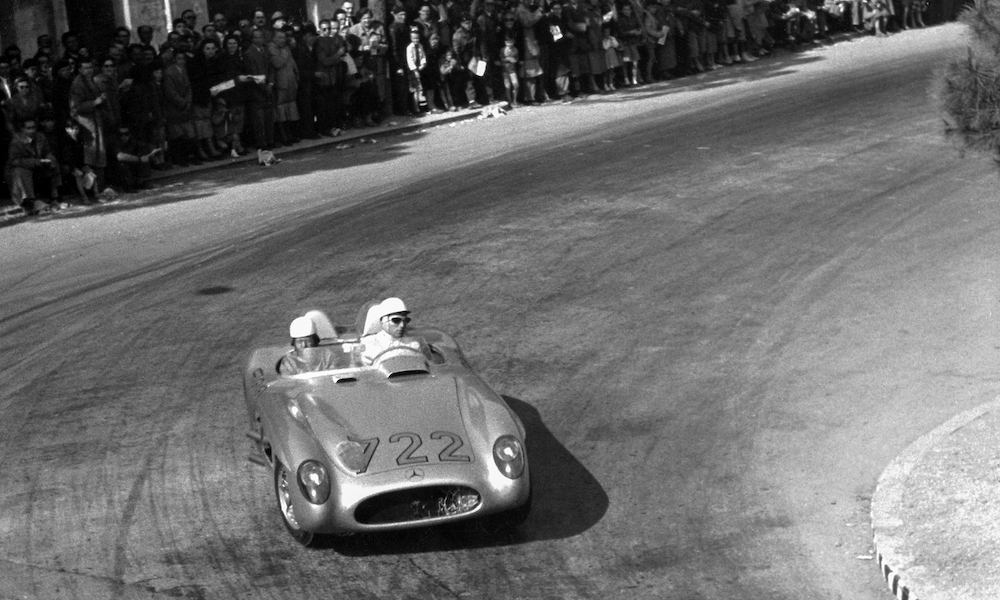
Photo: Mercedes
1955 Mille Miglia
Perhaps the most famous of all Moss triumphs, the 1955 Mille Miglia which he contested with journalist and navigator Denis Jenkinson is a tale of pure motor racing folklore.
The most arduous of away days, the single-lap road race rewarded local knowledge and tested the resolve of the world’s greatest drivers who flocked to the challenge.
Moss tried to level that disadvantage by touring the daunting Brescia-Rome-Brescia course with Jenkinson on six occasions before the main event, for which Mercedes had entered four of its brand new 300 SLR sports cars.
Armed with a roll of pace notes from those reconnaissance runs, Moss and Jenkinson set off on the 1,000-mile main stage intent on claiming a rare non-Italian victory.
Aided by Jenkinson’s notes and signals, Moss put together one of the drives of his life, completing the course in a record time of 10 hours, seven minutes and 48 seconds.
This put him half a minute ahead of his teammate and great F1 rival Juan Manuel Fangio, who finished second, while the other 300 SLRs of Kling and Hermann failed to finish.
Later in the year, Moss would go on to win his third TT at Dundrod, helping Mercedes to secure the World Sportscar Championship before its withdrawal from motorsport in deference to the Le Mans disaster.
Few race drives can compare with the Moss Mille Miglia; his average speed of 97.96 mph preserved as an unbeatable course record and his reputation cemented as one of the best drivers of all time.


















